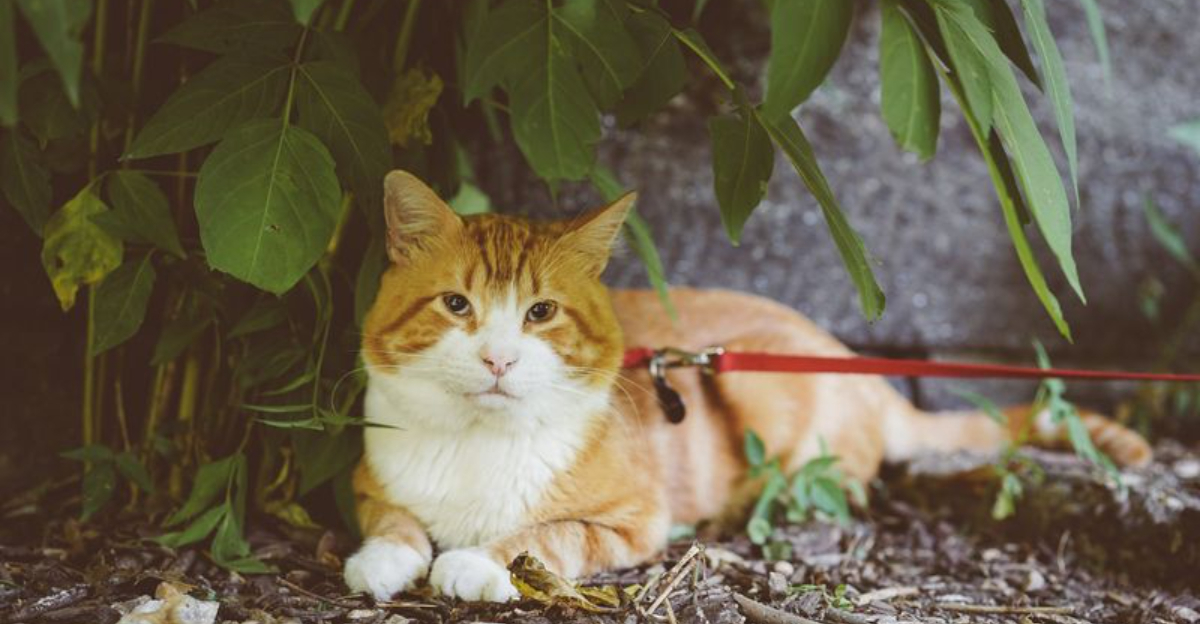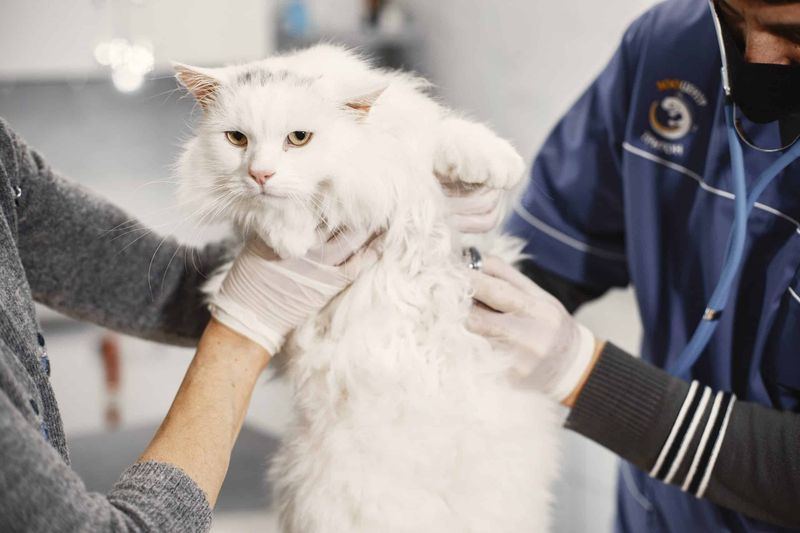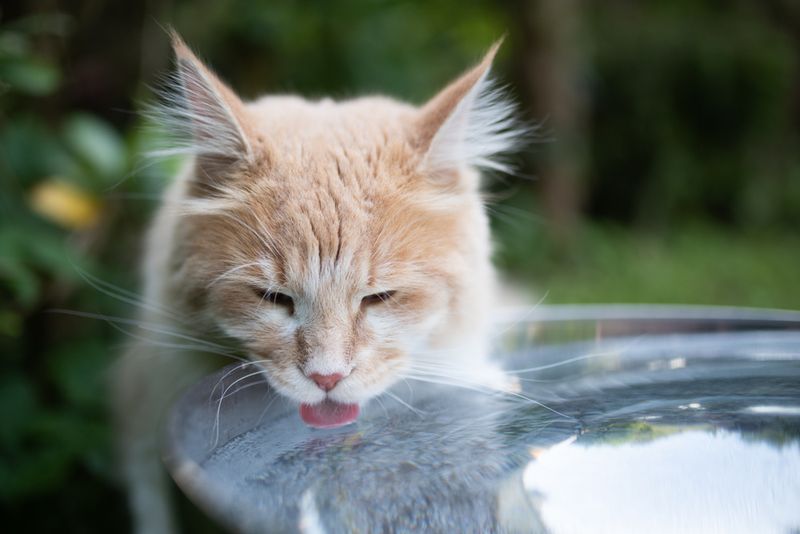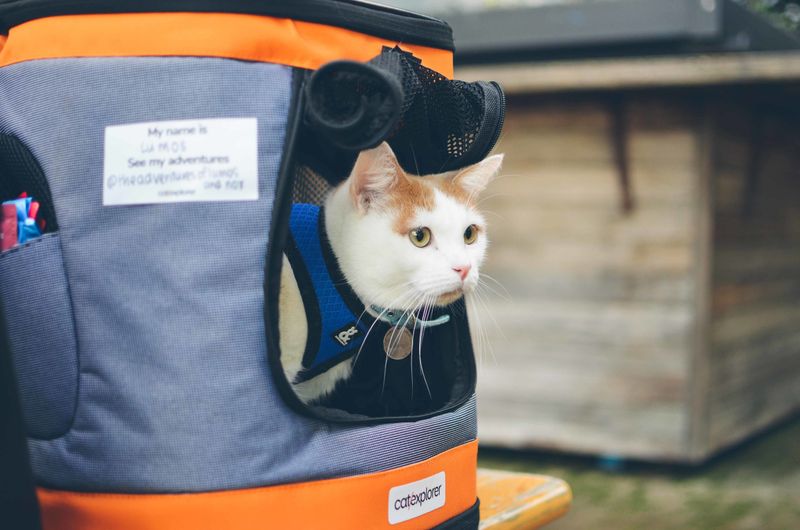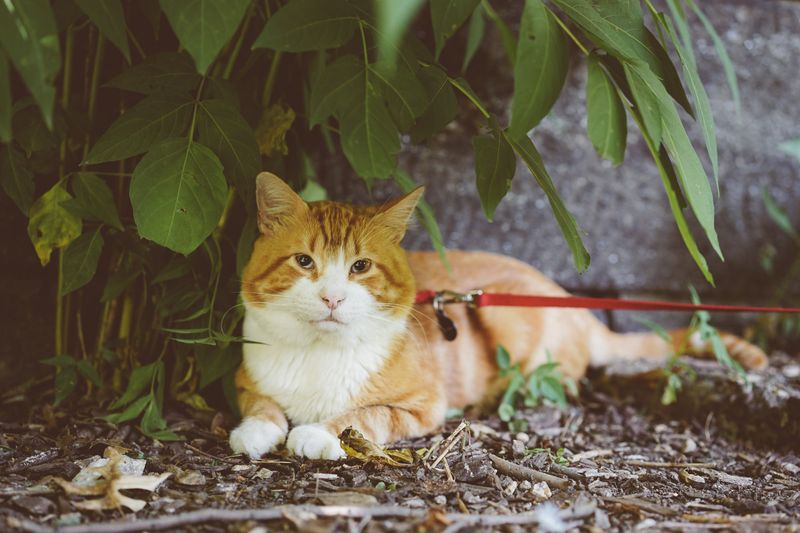📖 Table of Content:
- 1. Get Your Cat Comfortable with a Harness
- 2. Microchip and Update ID Tags
- 3. Schedule a Vet Check-Up
- 4. Invest in a Secure Cat Backpack or Carrier
- 5. Bring Fresh Water and a Portable Bowl
- 6. Avoid Peak Heat Hours
- 7. Pack a Cat-Friendly Adventure Kit
- 8. Use Flea, Tick, and Parasite Protection
- 9. Start with Quiet, Low-Traffic Spots
- 10. Watch for Stress Signals
As the days grow longer and the weather warms up, many cat owners feel the call of the outdoors—and some adventurous felines do too. While dogs tend to get the spotlight when it comes to outdoor excursions, more and more cat lovers are discovering that their whiskered companions can also enjoy nature safely and happily. Whether it’s a stroll through the park, a quiet afternoon in the backyard, or a hike in a pet-friendly trail, outdoor time can be enriching for cats when approached with care.
However, unlike dogs, cats aren’t naturally inclined to embrace new environments or routines. They thrive on familiarity, and even the most confident feline might balk at the sudden introduction of the great outdoors. That’s why preparation is crucial—not only to make your outing enjoyable but also to protect your cat from potential stress, injury, or health risks that come with new experiences and environments.
In this guide, we’ll walk you through ten essential steps to make sure your summer adventures with your cat are fun, fulfilling, and above all, safe. From training tips to gear recommendations and safety protocols, you’ll find everything you need to confidently head outside with your furry friend. Whether you’re new to cat outings or looking to refine your approach, these tips will help you and your cat make the most of summer together.
1. Get Your Cat Comfortable with a Harness
Introducing your cat to a harness is a gradual process that requires patience and positive reinforcement. Initially, place the harness near your cat’s favorite resting spot so they can sniff and get used to its presence. After a few days, try gently placing the harness on them without fastening it—offer treats and praise to associate it with a positive experience. Once they’re comfortable, fasten it for a few minutes at a time, gradually increasing duration as your cat adjusts. Encourage movement by calling your cat with treats or toys while they’re wearing it. As confidence grows, attach a lightweight leash and let them explore safely indoors. The goal is to ensure your cat feels secure in their gear before stepping into unfamiliar terrain.
2. Microchip and Update ID Tags
Ensuring your cat can be identified is one of the simplest yet most critical safety steps. A well-fitted breakaway collar with an up-to-date ID tag provides quick information in case your cat gets lost. Even better, a registered microchip offers a permanent backup if the collar falls off. Vet clinics and shelters routinely scan for microchips, helping reunite lost pets with their owners. Make sure your contact info is current in the microchip registry, especially before outings. It’s also worth taking a fresh photo of your cat in case you need to make a lost pet poster. Peace of mind comes from knowing you’ve taken every measure to keep your feline friend traceable.
3. Schedule a Vet Check-Up
Before any new adventure, it’s wise to have your vet give your cat a clean bill of health. During this visit, ask about necessary vaccinations that might be more important for outdoor cats—like rabies and feline leukemia. Your vet can also recommend flea, tick, and heartworm prevention tailored to your region. Be sure to discuss any medical history that could make outdoor activity risky, such as respiratory issues or arthritis. Cats with underlying conditions may need modifications to your outing plans or might be better off exploring in a stroller. If your cat’s nervous about travel, your vet might suggest calming supplements or techniques. Good health is the foundation of safe, enjoyable adventures.
4. Invest in a Secure Cat Backpack or Carrier
Exploration doesn’t always have to involve your cat walking on a leash. A well-ventilated backpack or carrier lets your cat experience the world while remaining cozy and contained. These are especially helpful for shy or older cats who prefer watching rather than walking. Look for carriers with multiple ventilation panels, soft padding, and secure zippers to prevent escape. Always let your cat get familiar with the carrier at home before using it outside. Some owners even leave the backpack open in a sunny spot so the cat associates it with comfort and warmth. A reliable carrier is your feline’s mobile safe space.
5. Bring Fresh Water and a Portable Bowl
Hydration is essential during hot summer outings, especially since cats are more prone to dehydration than dogs. Pack a collapsible or travel-friendly water bowl that fits easily in your bag or backpack. Use it regularly so your cat becomes accustomed to drinking from it before outdoor adventures. Clean, cool water should be offered frequently, especially after walking or time in direct sunlight. Some cats may prefer flavored water or ice cubes infused with tuna juice to encourage hydration. Never rely on puddles, ponds, or public fountains, as they may carry bacteria or chemicals. Being prepared with your own water supply keeps your cat cool and safe.
6. Avoid Peak Heat Hours
Summertime sun can be both a blessing and a hazard when it comes to pets. Aim to schedule outings in the early morning or later evening, when temperatures are cooler and UV rays are less intense. Hot pavement can easily burn sensitive paws—use the back-of-the-hand test: if it’s too hot for your skin, it’s too hot for your cat. Seek shaded paths and grassy areas, and limit walking time when it’s humid or blazing outside. Cats are susceptible to heatstroke, which can happen quickly and without warning. Signs include panting, drooling, and lethargy—immediate cooling and vet care may be necessary. Timing your trips right makes all the difference in comfort and safety.
7. Pack a Cat-Friendly Adventure Kit
Preparation is key to a stress-free adventure, and a cat-specific outing kit can make all the difference. Stock your bag with essentials like treats, a grooming brush, leash, poop bags, and a soft towel for cooling or cleaning. Include a small pet first-aid kit with items like tweezers, antiseptic wipes, and bandages. If your cat has any medications or allergies, be sure to pack those as well. It’s also smart to bring a toy or two to offer distraction or comfort during down moments. Having your supplies organized in a single bag makes it easy to grab and go. Your kit should evolve based on your outings and your cat’s unique needs.
8. Use Flea, Tick, and Parasite Protection
Outdoor spaces are crawling with hidden threats, and pests are one of the biggest concerns. Monthly topical treatments, oral preventatives, or flea collars can offer effective protection against fleas, ticks, and mites. Consult your vet for the best option for your cat’s age, size, and health profile. Don’t forget that even short visits to grassy areas or parks can expose your cat to parasites. After each outing, do a quick body scan for ticks—especially around the ears, neck, and underarms. Keeping up with preventatives ensures your cat stays itch-free and avoids serious illnesses like Lyme disease. A pest-free cat is a happy cat.
9. Start with Quiet, Low-Traffic Spots
Not every cat is a thrill-seeker, and the best way to build confidence is by starting small. Choose calm environments like your backyard, a friend’s quiet garden, or a tucked-away park corner. Avoid busy streets, noisy crowds, or areas where dogs are off-leash during early outings. Let your cat lead the pace, and don’t expect full exploration right away. Sometimes, just sitting on a blanket together and observing the world can be enough for the first few trips. As your cat gets more curious and less hesitant, you can branch out to new places. Gentle exposure builds trust and makes every new place feel a little more familiar.
10. Watch for Stress Signals
Reading your cat’s body language is crucial for their comfort and safety. While some cats may eagerly sniff, walk, and observe, others might show stress through crouching, hiding, or excessive vocalizing. Flattened ears, puffed tails, and wide eyes are signs that it may be time to retreat. Don’t push your cat to interact with environments that overwhelm them—respect their boundaries. Short, positive experiences help build confidence over time, and forcing them can lead to lasting anxiety. It’s okay to call it a day if things aren’t going well—your cat’s wellbeing comes first. Tuning into their cues is the secret to successful adventures.
